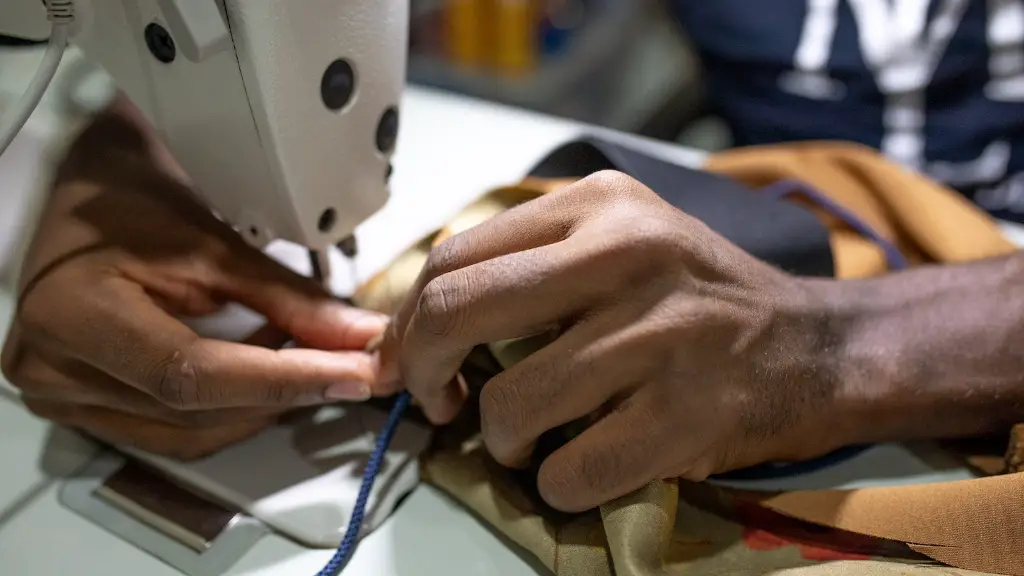Before You Pack
Before packing your sewing machine, it’s important to prepare it for shipping. This can be done by checking the machine for any tears, snags or broken parts. Make sure it’s in good physical condition, as any damage to the item with shipping is your responsibility. It’s also a good idea to make sure all of the pieces are accounted for and undamaged. If there are any missing pieces or broken parts, it’s best to replace them before packing up the machine.
In addition, you should also review the owner’s manual. If you don’t have a copy of the manual, you can usually find one online. This can help you know what kind of packing material you need, as well as how to properly prepare the machine for shipping. Once the machine is prepped and ready, it’s time to get packing.
Gathering Materials
Begin by gathering the materials necessary for packing. This includes bubble wrap, foam padding, packing tape and cardboard boxes. Be sure to have several different size boxes, so you can properly pack up all of the items. If possible, it’s best to use the original box for the machine, as it was likely specifically designed for the item.
When choosing a box, be sure to pick a strong one, as the item needs to be protected from dents and other damages. You can then line the box with bubble wrap and foam padding to fill any open spaces. This will cushion the item, so it doesn’t move around while in shipment.
Setting Up the Box
Once you have a suitable box and enough packing materials, you can begin to prepare the item for shipping. Start by laying out the supplies and assembling the box, making sure it is sealed properly at all connections.
Remove all of the attachments and accessories from the sewing machine. Securely wrap each attachment, along with the foot pedal and power cords, in the bubble wrap. Place all of the loose pieces in a separate container. This way, they won’t be at risk of damage, or being left behind if the box is opened.
Filling the Box
After everything is securely wrapped and placed where it needs to go, you can begin to fill the box. Start by placing a layer of bubble wrap on the bottom, then add the loose pieces and the machine itself. If the item is too large for the box, you may need to use foam padding to fill any extra space, or you can opt for another size box.
Once the box is filled, be sure to double-check it to make sure all of the pieces are secure, and then tape up the box. As a final step, make sure you clearly label the box, as well as attach any necessary shipping labels. If there are any special instructions for handling, make sure to note them on the box.
Shipping Considerations
If you plan to ship your sewing machine, it’s important to be aware of the rules and regulations outlined by the carrier. Some carriers may require additional protection or certain types of packaging, so be sure to read through the requirements before sending it off. Be sure to also confirm the weight and dimensions of the item, as this can determine the cost of shipping.
When all is said and done, you should find a reliable shipping company that can get your item safely and promptly to its destination. Be sure to compare rates from several shipping companies, and get the appropriate type of insurance for the item, if necessary.
Online Shipping Options
If you don’t have time to go to a shipping company and prefer to ship your sewing machine online, you have several options. Some popular services include Amazon and eBay, which offer discounted shipping rates and other perks such as tracking and delivery confirmations. You can also use services like FedEx and UPS, which typically require slightly more work, but offer a more reliable and specialized service.
Whatever service you decide to use, make sure to carefully read all of the shipping options, rates and insurance details before deciding. This can help ensure that your sewing machine is securely and promptly delivered to its intended destination.
Storage Considerations
If you don’t plan to send your sewing machine immediately, it’s also important to think about storage. Storing the item in a dry place is essential, as humidity and other environmental conditions can cause damage to the machine. It’s also a good idea to make sure it’s safely secured, as it can be easy to knock over a sewing machine if not properly secured.
It’s also a good idea to properly clean the sewing machine before storing. If left uncleaned, dust and other debris can settle on the machine, causing problems when it’s time to use it again. You can also coat the metal pieces with a light layer of oil, as this will protect it from rust.
Maintaining Your Machine
When it comes to maintaining your sewing machine, regular maintenance is key. It’s important to learn how to properly oil and clean the machine, as well as repair any broken parts. Consulting the owner’s manual can also be helpful in learning how to care for your machine.
It’s also important to make sure you have the right parts and supplies. Get in the habit of stocking up on bobbins, needles and other accessories, so you’re always prepared. This can save you both time and money, as having the right parts on hand can help avoid costly repairs.




